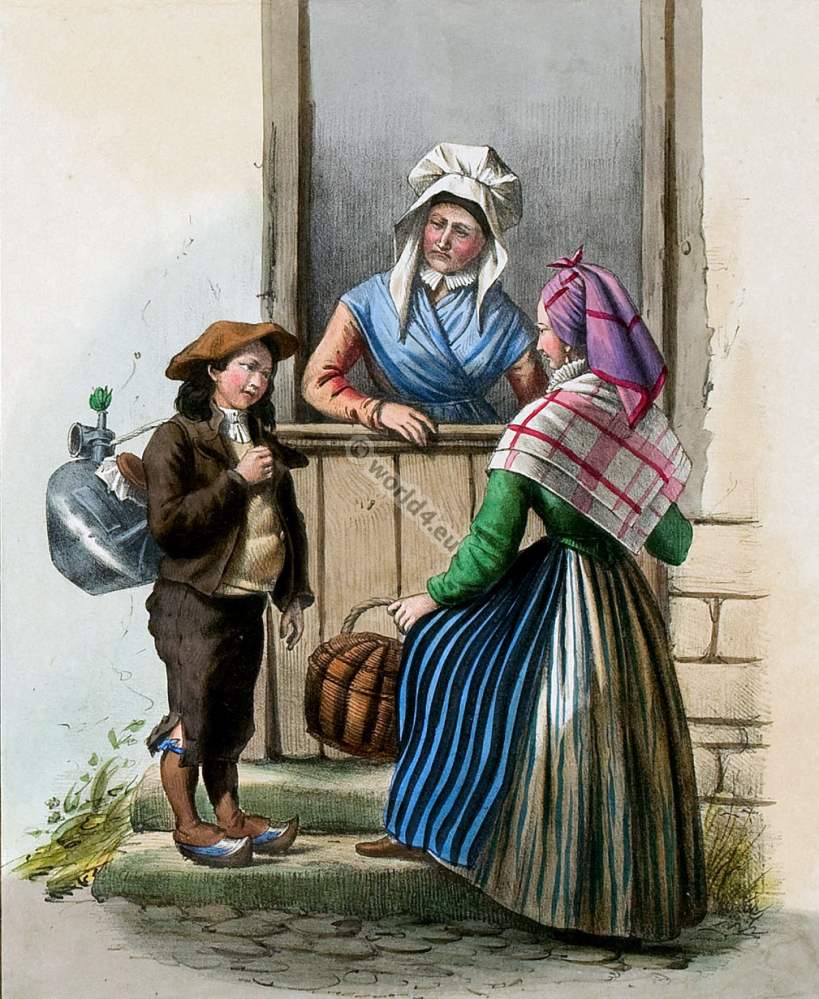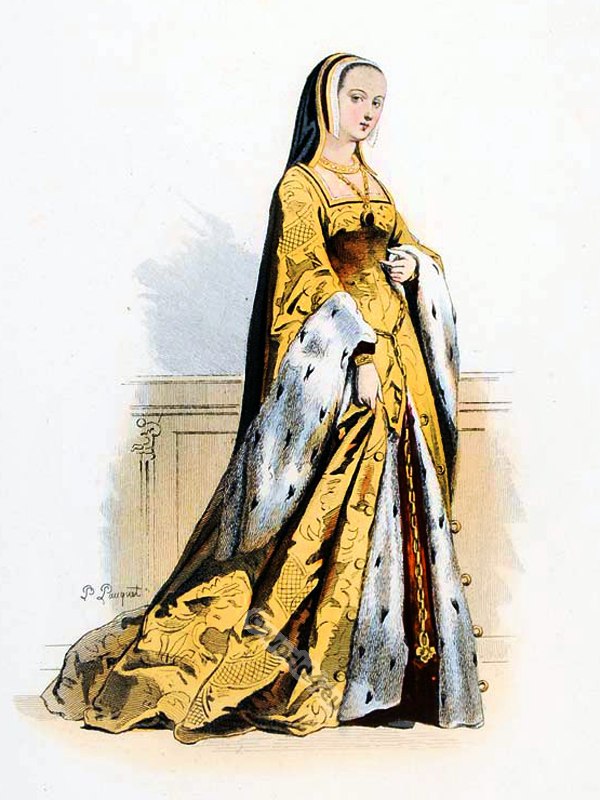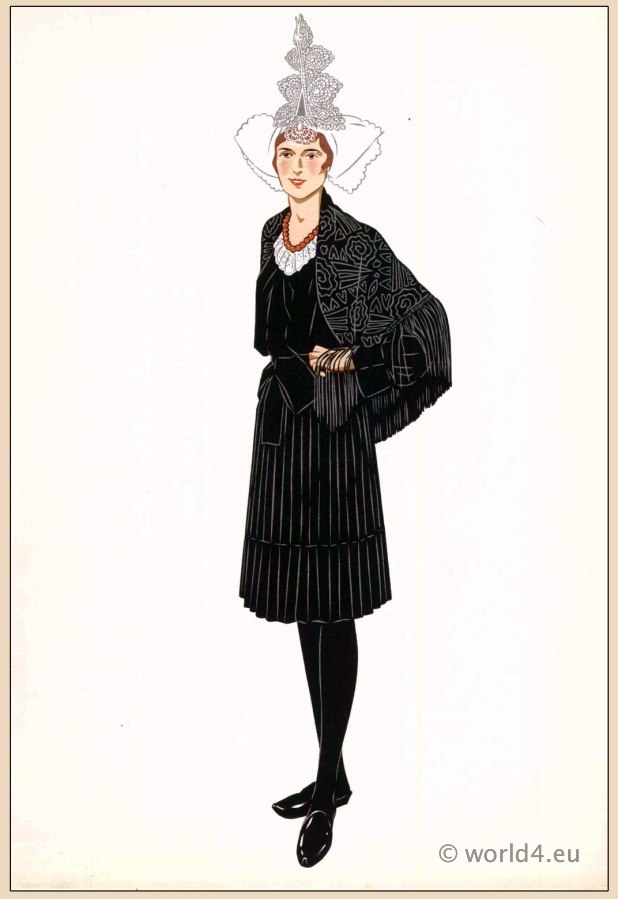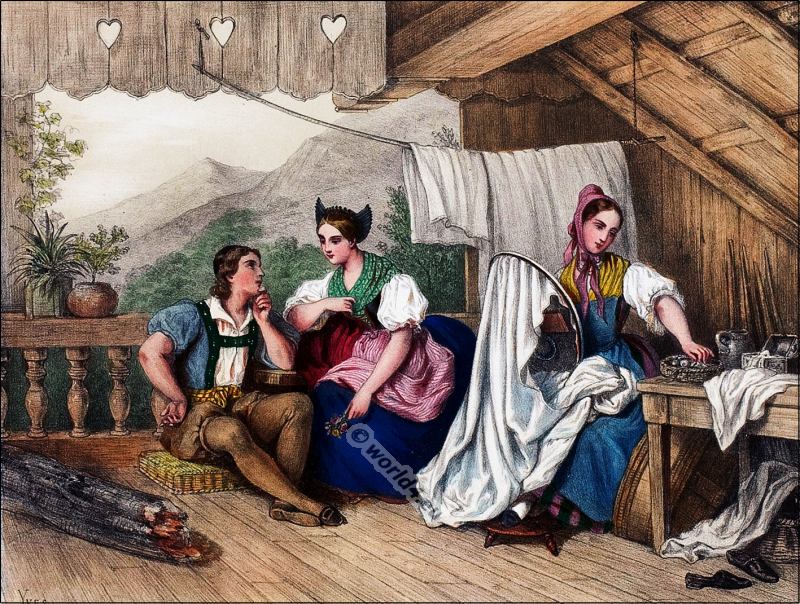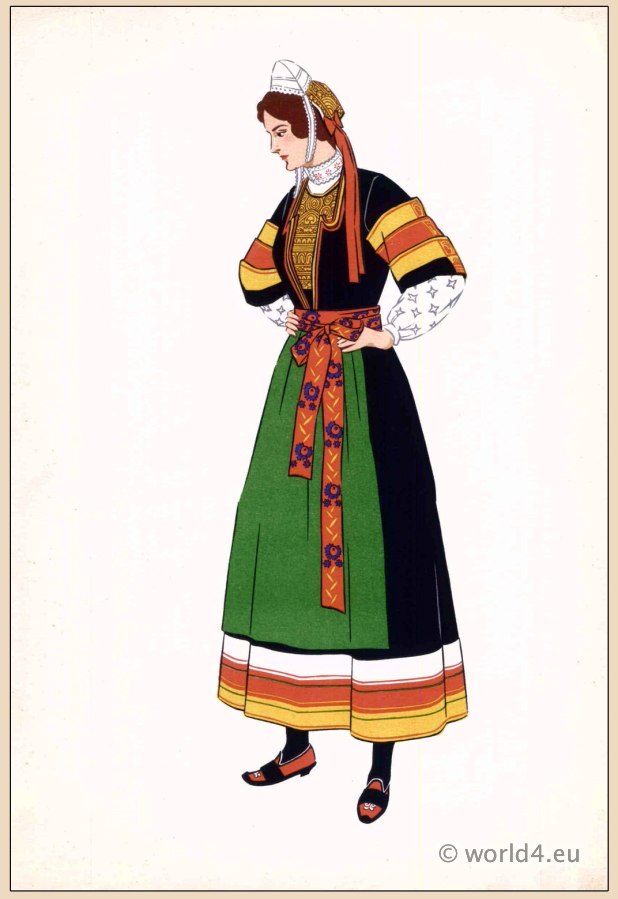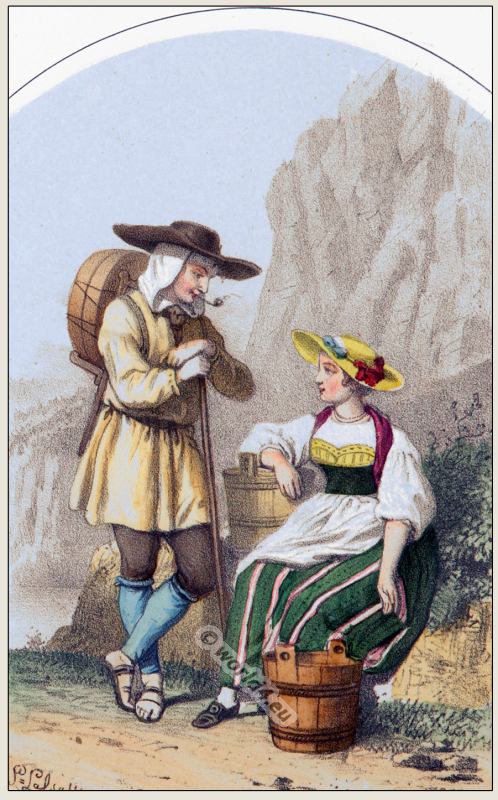BRETAGNE.
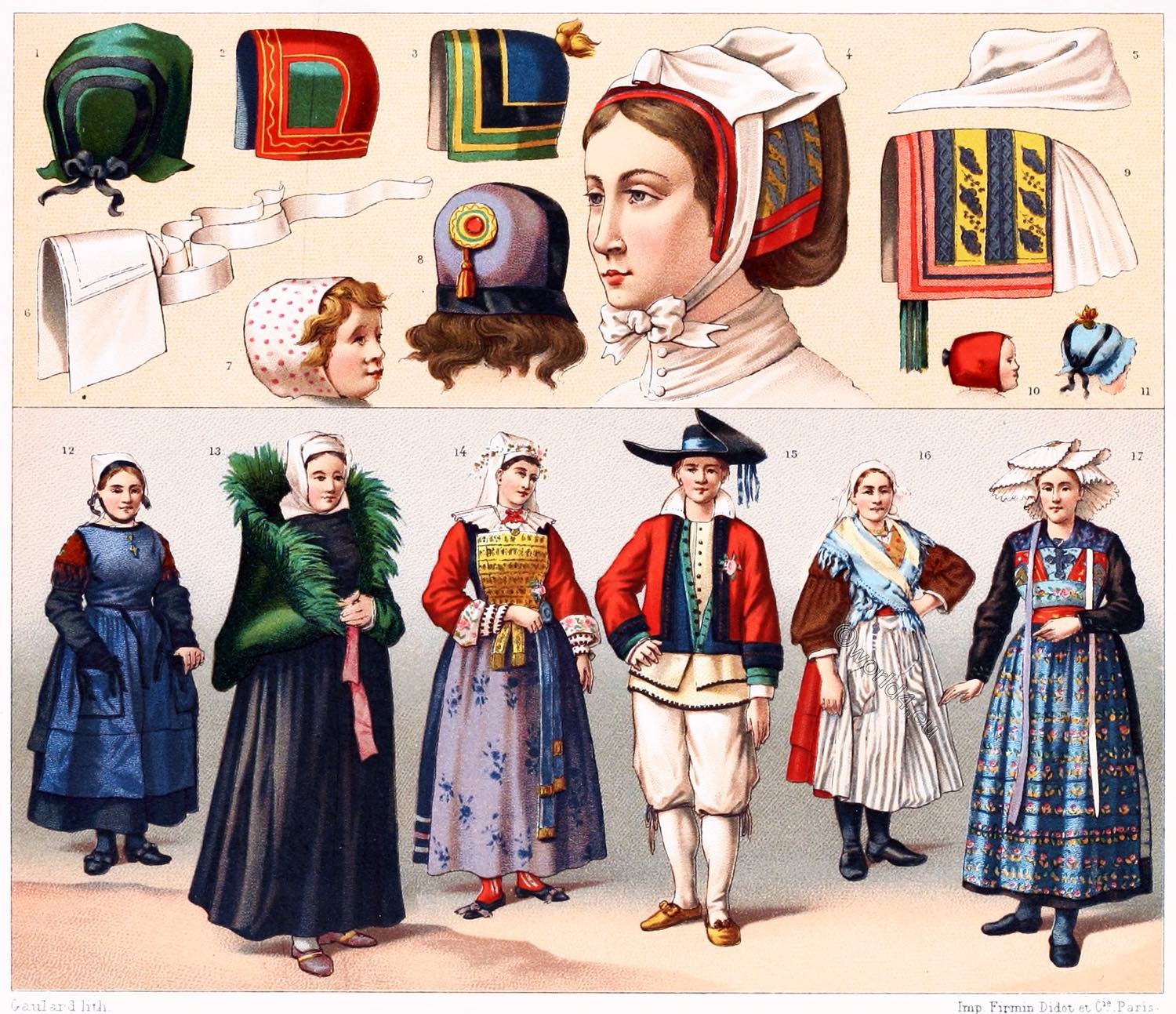
HAIRDRESSES OF WOMEN AND CHILDREN: THE BIGOUDEN OF PONT-L’ABBÉ AND THE CABELLOU. – WOMEN OF SABLES-D’OLONNE.
SALT-WINNING POPULATION OF THE GUÉRANDE PENINSULA: COSTUME OF THE MARRIED; THE VENTEL, CHURCH CLOAK.
HEADWEAR FOR CHILDREN: THE GABELLOU.
Boys and girls wear the cobellou, a small colourful cap. That of the boys is decorated with a pompon or tassel. Since boys up to the age of six or seven also wear a skirt, this is the only distinguishing feature of the two sexes.
Hairstyle of the women of Pont-l’Abbe, department of Finistere: the bigouden. The bigouden is a headgear made of linon or calico, which the women of Pont-l’Abbe put over their silk embroidered cap. The women themselves are called bigoudens after this headdress.
Nos. 1, 2, 7 and 8. little girls’ caps.
Nos. 3, 10 and 11. boys’ caps.
No. 4. bigouden in linon, attached with ribbons over a silk embroidered cap.
No. 5. bigouden in calico, the ribbons of which must be placed independently over the headdress.
No. 6. calico bigouden, which also forms a cap, with the ribbons attached to the bottom of the cap.
No. 9. cap with gold, silver and silk embroidery; bottom in pleated linon; coloured ribbons.
Women of Sables-d’Olonne.
The men of Sables-d’Olonne are skilled sardine fishermen; the women support them in their trade and provide rural work.
No. 16. fisherwoman from Sables-d’Olonne; Monday dress. Carbriole of canvas. Golden necklace and earrings. Woolen jacket with puff sleeves. Over it a scarf with fringes. Flannel skirt. Striped apron with pockets, in one pocket of the apron is a knife on a silver chain. Wool stockings. Leather shoes.
No. 12. vegetable gardener from Sables. Small linen bonnet, with a ribbon tied at the side. Wool jacket with velvet trimmed sleeves. Skirt of the same fabric. Bib apron over a woolen breast cloth. Wool stockings. Leather shoes with silk bow. Golden heart and cross on a black cord.
SALT MINING POPULATION OF THE GUERANDE PENINSULA; DEPARTEMENT LOIRE-INFERIEURE.
In Saillé and Batz, the two main towns on the peninsula, the population has kept itself pure and faithful to the Breton language and customs.
No. 13. inhabitant of Batz; church dress. Black clothing; above it the ventel, a coat of coarse fabric with dense fringes of combed wool dyed green or black, inherited from generation to generation. When the young mother goes to church she carries a basket from which she distributes consecrated bread.
Nos. 14 and 15. costume of the married women in Saillé,
No. 14: Parted and braided hair, diadem-like together above the forehead, a battis bonnet above. Large lace collar. Purple bodice with red sleeves and bust of silk embroidered gold brocade, wool skirt. Silk apron and sash. Red gusset stockings. Shoes with bows.
No. 15. hat with brim turned up to the side. Collar turned down. Three waistcoats on top of each other. Red jacket. Linen puff trousers. White stockings. Yellow leather shoes.
No. 19. Savoy mountain dweller.
Nos. 1, 2, 3, 4, 5, 6, 7, 8, 9, 10, 11 and 13 after photographs and studies by Villard Jr. in Quimper.
Nos. 12 and 16 after photographs by Collin in Sables-d’Olonns.
Nos. 14 and 15 by folk type in the Museum of Natural History in Nantes.
No. 17 in the ethnographic museum of the Trocadero.
See Pitre-Chevalier and Emile Souoestre, Nantes et la Loire-Inférieure; 1850. Achille Raverat, Promenades historiques en Maurienne et en Tarentaise; 1872.
Source: History of the costume in chronological development by Auguste Racinet. Edited by Adolf Rosenberg. Berlin 1888.
Related
Discover more from World4 Costume Culture History
Subscribe to get the latest posts sent to your email.

